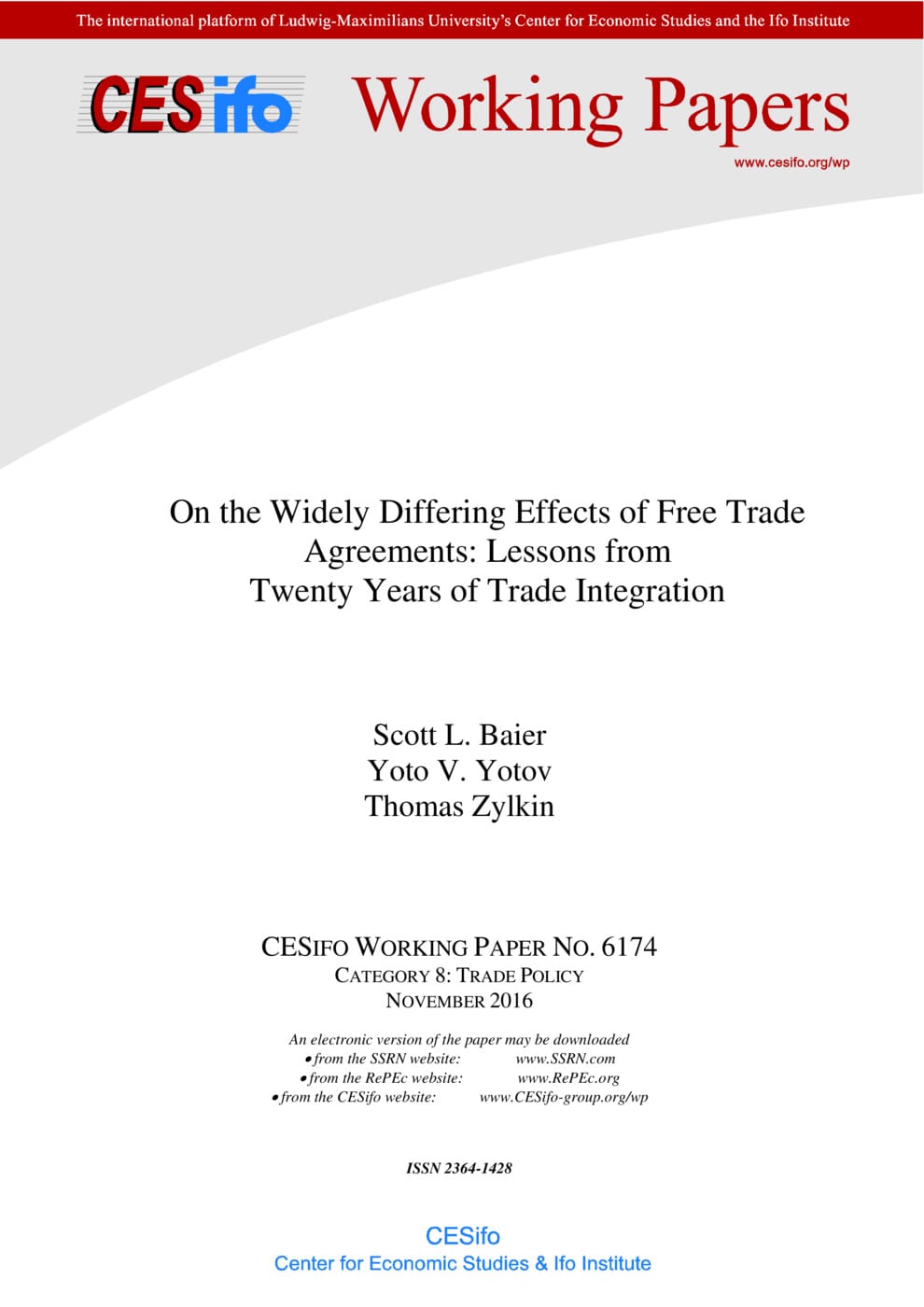On the Widely Differing Effects of Free Trade Agreements: Lessons from Twenty Years of Trade Integration
CESifo, Munich, 2016
CESifo Working Paper No. 6174

We develop a novel two-stage methodology that allows us to study the empirical determinants of the ex post effects of past free trade agreements (FTAs) as well as obtain ex ante predictions for the effects of future FTAs. We first identify 908 unique estimates of the effects of FTAs on different trading pairs for the years 1986-2006. We then employ these estimates as our dependent variable in a “second stage” characterizing the heterogeneity in these effects. Interestingly, most of this heterogeneity (~ 2/3) occurs within FTAs (rather than across different FTAs), with asymmetric effects within pairs (on exports vs. imports) also playing a important role. We offer several intuitive explanations for these variations. Even with the same agreement, FTA effects are weaker for more distant pairs and for pairs with otherwise high levels of ex ante trade frictions. The effects of new FTAs are similarly weaker for pairs with existing agreements already in place. In addition, we are able to relate asymmetries in FTA effects to each country’s ability to influence the other’s terms of trade. Out-of-sample predictions incorporating these insights enable us to predict direction-specific effects of future FTAs between any pair of countries. A simulation of the general equilibrium effects of TTIP demonstrates the importance of our methods.
Trade Policy